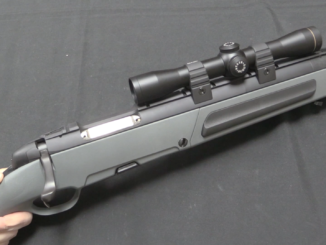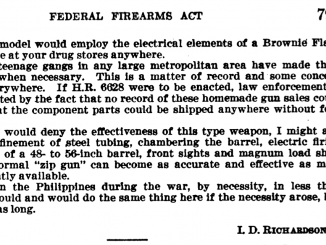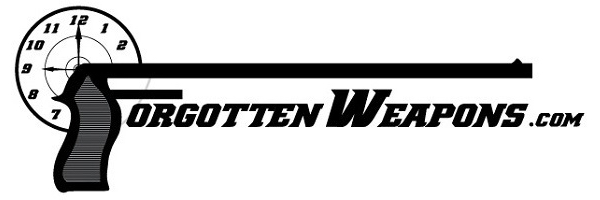The Lindner carbine was an early US cavalry carbine used during the Civil War. Unlike the many metallic cartridge firing carbines that would follow, it was a breechloader that used .58 caliber paper cartridges. An initial order for 892 of them was delivered to the Army, and Lindner went on to make some improvements to the design. By the time his improved version was ready, the paper cartridge had been rendered obsolete by metallic cartridges, and the Army was no longer interested in the guns. To avoid having to purchase them, they refused to send an inspector to Lindner’s factory, thus ensuring that none of the guns would pass inspection. A slimy but legal way out of their contract, as the ensuing legal battle was decided in favor of the government and Lindner had to sell his extra guns in Europe.
Related Articles

Bolt Action Rifles
The Steyr Scout: Jeff Cooper’s Modern Day Frontier Rifle
Jeff Cooper was an icon of the American firearms community, best known for his work with the Southwest Pistol League and father of modern practical handgun competition. Cooper was a Marine Corps veteran and avid […]

Gunsmithing
Richardson Guerrilla Gun in Congressional Testimony
A reader/viewer named John sent me this letter after seeing the Richardson Guerrilla Gun video. It was written by Richardson himself in 1965, as part of the formal record on Congressional debate of HR6628, which […]

Semiauto pistol
Boberg XR9-L Review
Last week I posted a review of a very much not-forgotten pistol over at TheFirearmBlog.com – a brand new Boberg XR9-L. It doesn’t have any historical significance yet, but it’s a pretty interesting mechanical design, […]

What type of spring pops the breech open; lever or coil?
Seems like a very practical firearm, as long as one can get powder, lead, caps, and cigarette papers.
Looks like it’s more or less an improvement (or at least adaptation) of the old Hall design.
The Lindner seems to have a much better system for containing the hot gases than the Hall does, but a bullpup configuration is out of the question. The larger knob on the rotating piece would be much nicer when the gun gets fouled. Cleaning the interior of the rotating piece forward of the knob looks frustrating if it didn’t come off easily.
Alas, poor Lindner. Interestingly, the Bavarian Podewils-Lindner, which also used a paper cartridge, had the breech plug rotate and shove out through the rear rather than swivel. The only advantage to the Lindner and the Podewils is that they can operate where brass cartridges cannot be supplied easily (early colonial areas in North Africa and the Middle East) unless I’m totally wrong. The only problem is that the extra step of having to add the percussion cap before loading the paper into the chamber of the Podewils could prove disastrous to anyone without basic gun safety…
You can see whether there is a cap on the nipple easily, and it won’t matter what’s in the bore.
Seems more safe than a complete cartridge firearm that could always have one in the chamber.
Well, the loading and firing procedure for the Podewils goes like this:
1. Draw the hammer back to full cock.
2. Dig a paper cartridge out from your cartridge pouch. It will have a percussion cap at the base.
3. Put the base of the cartridge on the cap nipple of the rifle. Percussion cap stays on the nipple, cartridge doesn’t
4. Rotate the breech block handle counter-clockwise 90 degrees and yank the unit back.
5. Stuff paper cartridge into breech.
6. Push breech block into place (you may need to shove) and lock the breech block.
7. Take aim
8. FIRE!!!!!!!
Did I mess up anything in the procedure?
“Did I mess up anything in the procedure?”
In this video: https://www.youtube.com/watch?v=JAxwfyeSPqQ
Point “4. Rotate the breech block handle counter-clockwise 90 degrees and yank the unit back.” is done as a first, however I don’t know how Bavarian soldiers were trained.
“only advantage (…) the Podewils is that they can operate where brass cartridges cannot be supplied easily”
Bavarian Podewils were conversion of earlier muzzle-loaders, so I assume that were cheaper than breech-loaders produced from scratch.
Reminds me of the Norwegian Kammerlader rifle
“and the Army was no longer interested in the guns. To avoid having to purchase them, they refused to send an inspector to Lindner’s factory, thus ensuring that none of the guns would pass inspection.”
So this is another design which was outrun by technical progress – typical example during technical revolution (like steam engine [piston] powered battleships after HMS Dreadnought enter service or propeller-driven [piston] aeroplanes after start of jet age)
Dear Ian,
On one of your shows on early BREACH LOADERS YOU HAD A COOPER’S 1861 PATENT Capping B/L with a Toggle sliding breach.(Cooper and Goodman)
I have one of these and shoot it out to 1000yds.I have researched these rifles for many years and have only found 5 others. One in OZ. and the others in UK. I presume the one you showed was in USA.To add to my list can you tell me what calibre, format(Match or Sporter) weight,Barrel length and Number and Photos (if poaaible)..
Looking forward to your reply,
Kind regards and best wishes,
Michael Swingler. MLAGB Member 93..
In fact the Army did NOT get out of the contract. Amoskeag went to the Court of Claims and lost as Ian says.
Amoskeag appealed to the U.S. S. C. and won, on the basis of “This is too slimy for us to let the Government pull”- A. M. C. vs. U. S, 84 U.S. 592 (1873)
Here’s the very brief opinion –
https://www.loc.gov/resource/usrep.usrep084592/
And then, of course, Amoskeag didn’t pay Lindner, whose estate had to su all the way up to the H. H. S. C., and won the royalties.
Clark v. Amoskeag Manufacturing Co., 62 N.H. 612 (1883)
https://www.courtlistener.com/opinion/3570960/clark-v-amoskeag-manufacturing-co/
It’s a curse being a lawyer.
Sue not su, and N. H. S. C.